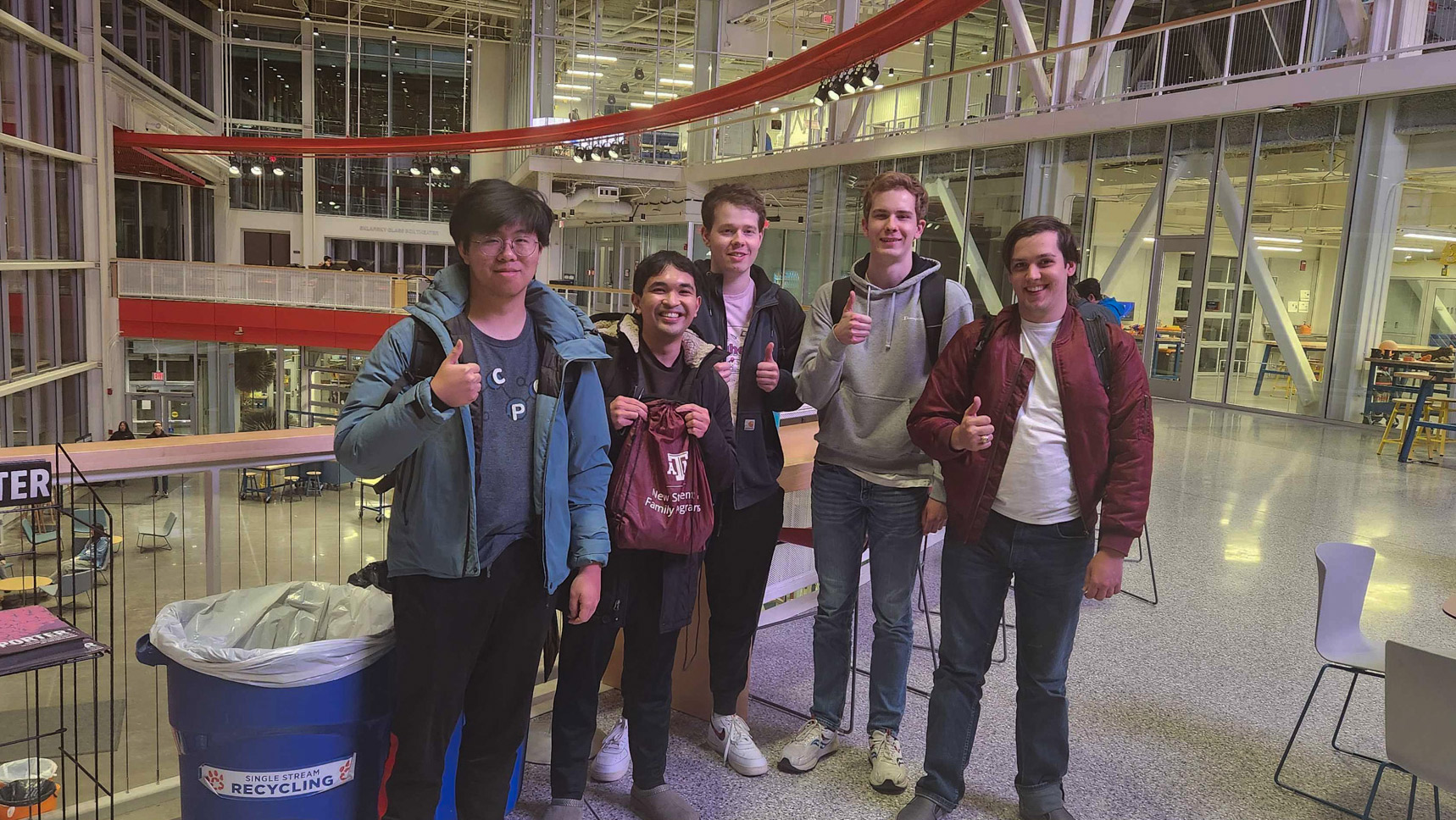
In a high-stress, realistic scenario, they demonstrated technical excellence, perseverance and dedication that will be invaluable in defending us in the cyber domain, whether they pursue careers in government or the private sector.
Computer science and engineering students Sam Bederman, Michael Bengil, Devon Kelly IV, Noah Mustoe and Alex Zhang won first place in the 2025 Information Security Talent Search (ISTS) competition at Rochester Institute of Technology. They faced 16 other teams to become the ISTS champions.
ISTS is a three-day, invite-only competition put on by RITSEC, Rochester Institute of Technology’s student-run computer security club. The competition requires both attack and defense skills and presents teams with challenges similar to those they will face as future cybersecurity professionals.
“I am incredibly proud of the Texas A&M team’s win at the RITSEC Information Security Talent Search Competition,” said Dr. Martin Carlisle, faculty advisor for the Texas A&M Cybersecurity Club, of which the students are members. “In a high-stress, realistic scenario, they demonstrated technical excellence, perseverance and dedication that will be invaluable in defending us in the cyber domain, whether they pursue careers in government or the private sector.”
ISTS has several components. Primarily, teams must maintain 13 services across 11 devices while fending off attacks from the red team, a non-competing group of cybersecurity professionals. Other components included Injects, where teams created reports about the services they were running (much like they will be asked to do when working for a real-world company); King of the Hill, where teams attacked and tried to maintain control of six machines with built-in vulnerabilities; and Capture the Flag (CTF), where teams earned flags for solving challenges. Throughout the competition, they could also attack — or be attacked by — the other teams.
“The tricky part about ISTS is how many different components you have to focus on at once,” said Mustoe, team captain. “Unless your team is properly working together and diversifying its efforts, it quickly becomes impossible. This makes having a strong team relationship and culture an important aspect of the competition.”
A final competition component was The Game: a physical challenge where teams had one chance to use an under-the-door hook to enter a locked room monitored by cameras. Once inside, teams attempted to unlock a safe while evading detection.
"With so many aspects to the competition, it was a fun and challenging atmosphere. One minute I was bringing back up a website, another I was calling other teams to coordinate strategy,” said Kelly. “It was definitely one of the most interesting competitions in the CCDC [Collegiate Cyber Defense Competition] style format I have seen, especially since it was the first one I have seen include a physical security challenge on top of CTFs, King of the Hill and service defense."
The Texas A&M Cybersecurity Club receives support from the Texas A&M Cybersecurity Center.